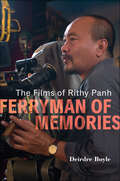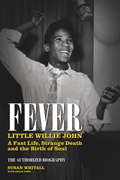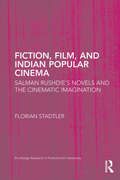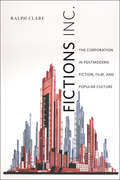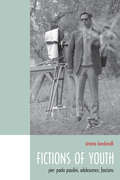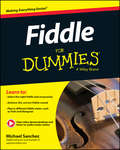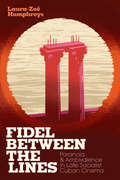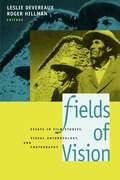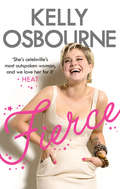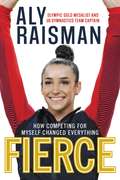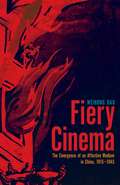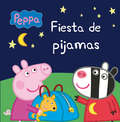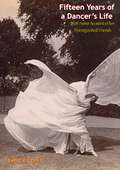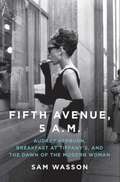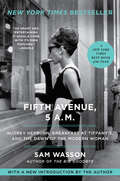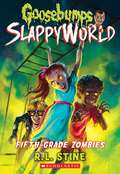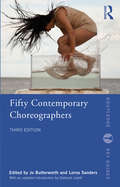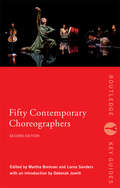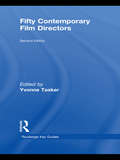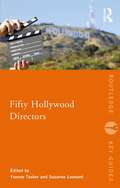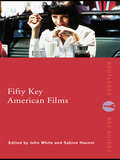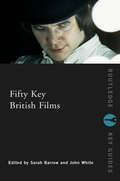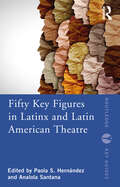- Table View
- List View
Ferocious Reality: Documentary according to Werner Herzog (Visible Evidence #27)
by Eric AmesOver the course of his career Werner Herzog, known for such visionary masterpieces as Aguirre: The Wrath of God (1972) and The Enigma of Kaspar Hauser (1974), has directed almost sixty films, roughly half of which are documentaries. And yet, in a statement delivered during a public appearance in 1999, the filmmaker declared: &“There are deeper strata of truth in cinema, and there is such a thing as poetic, ecstatic truth. It is mysterious and elusive, and can be reached only through fabrication and imagination and stylization.&” Ferocious Reality is the first book to ask how this conviction, so hostile to the traditional tenets of documentary, can inform the work of one of the world&’s most provocative documentarians.Herzog, whose Cave of Forgotten Dreams was perhaps the most celebrated documentary of 2010, may be the most influential filmmaker missing from major studies and histories of documentary. Examining such notable films as Lessons of Darkness (1992) and Grizzly Man (2005), Eric Ames shows how Herzog dismisses documentary as a mode of filmmaking in order to creatively intervene and participate in it. In close, contextualized analysis of more than twenty-five films spanning Herzog&’s career, Ames makes a case for exploring documentary films in terms of performance and explains what it means to do so. Thus his book expands the field of cinema studies even as it offers an invaluable new perspective on a little studied but integral part of Werner Herzog&’s extraordinary oeuvre.
Ferryman of Memories: The Films of Rithy Panh
by Deirdre BoyleFerryman of Memories: The Films of Rithy Panh is an unconventional book about an unconventional filmmaker. Rithy Panh survived the Cambodian genocide and found refuge in France where he discovered in film a language that allowed him to tell what happened to the two million souls who suffered hunger, overwork, disease, and death at the hands of the Khmer Rouge. His innovative cinema is made with people, not about them—even those guilty of crimes against humanity. Whether he is directing Isabelle Huppert in The Sea Wall, following laborers digging trenches, or interrogating the infamous director of S-21 prison, aesthetics and ethics inform all he does. With remarkable access to the director and his work, Deirdre Boyle introduces readers to Panh’s groundbreaking approach to perpetrator cinema and dazzling critique of colonialism, globalization, and the refugee crisis. Ferryman of Memories reveals the art of one of the masters of world cinema today, focusing on nineteen of his award-winning films, including Rice People, The Land of Wandering Souls, S-21: The Khmer Rouge Killing Machine, and The Missing Picture.
Fever: Little Willie John's Fast Life, Mysterious Death, and the Birth of Soul
by Susan WhitallLittle Willie John lived for a fleeting 30 years, but his dynamic and daring sound left an indelible mark on the history of music. His deep blues, rollicking rock 'n' roll and swinging ballads inspired a generation of musicians, forming the basis for what we now know as soul music. Born in Arkansas in 1937, William Edward John found his voice in the church halls, rec centers and nightclubs of Detroit, a fertile proving ground that produced the likes of Levi Stubbs and the Four Tops, Stevie Wonder, Aretha Franklin, Diana Ross and the Supremes, Smokey Robinson and Hank Ballard and the Midnighters. One voice rose above the rest in those formative years of the 1950s, and Little Willie John went on to have 15 hit singles in the American rhythm & blues chart, with considerable cross-over success in pop. Some of his songs might be best known by their cover versions ("Fever" by Peggy Lee, "Need Your Love So Bad" by Fleetwood Mac and "Leave My Kitten Alone" by The Beatles) but Little Willie John's original recording of these and other songs are widely considered to be definitive, and it is this sound that is credited with ushering in a new age in American music as the 1950s turned into the 60s and rock 'n' roll took its place in popular culture. The soaring heights of Little Willie John's career are matched only by the tragic events of his death, cutting short a life so full of promise. Charged with a violent crime in the late 1960s, an abbreviated trial saw Willie convicted and incarcerated in Walla Walla Washington, where he died under mysterious circumstances in 1968. In this, the first official biography of one of the most important figures in rhythm & blues history, author Susan Whitall, with the help of Little Willie John's eldest son Kevin John, has interviewed some of the biggest names in the music industry and delved into the personal archive of the John family to produce an unprecedented account of the man who invented soul music."Little Willie John is the soul singer's soul singer." - Marvin Gaye. "My mother told me, if you call yourself 'Little' Stevie Wonder you'd better be as good as Little Willie John." - Stevie Wonder "Willie John was one of the most brilliant singers you would ever want to come across, bar none. There are things that were great, there are things that were good. Willie John was past great." - Sam Moore "Little Willie John did not know how to sing wrong, know what I mean?"- Dion "Little Willie John was a soul singer before anyone thought to call it that." -James Brown
Fiction, Film, and Indian Popular Cinema: Salman Rushdie’s Novels and the Cinematic Imagination (Routledge Research in Postcolonial Literatures #48)
by Florian StadtlerThis book analyses the novels of Salman Rushdie and their stylistic conventions in the context of Indian popular cinema and its role in the elaboration of the author’s arguments about post-independence postcolonial India. Focusing on different genres of Indian popular cinema, such as the ‘Social’, ‘Mythological’ and ‘Historical’, Stadtler examines how Rushdie’s writing foregrounds the epic, the mythic, the tragic and the comic, linking them in storylines narrated in cinematic parameters. The book shows that Indian popular cinema’s syncretism becomes an aesthetic marker in Rushdie’s fiction that allows him to elaborate on the multiplicity of Indian identity, both on the subcontinent and abroad, and illustrates how Rushdie uses Indian popular cinema in his narratives to express an aesthetics of hybridity and a particular conceptualization of culture with which ‘India’ has become identified in a global context. Also highlighted are Rushdie’s uses of cinema to inflect his reading of India as a pluralist nation and of the hybrid space occupied by the Indian diaspora across the world. The book connects Rushdie’s storylines with modes of cinematic representation to explore questions about the role, place and space of the individual in relation to a fast-changing social, economic and political space in India and the wider world.
Fictions Inc.
by Ralph ClareFictions Inc. explores how depictions of the corporation in American literature, film, and popular culture have changed over time. Beginning with perhaps the most famous depiction of a corporation--Frank Norris's The Octopus--Ralph Clare traces this figure as it shifts from monster to man, from force to "individual," and from American industry to multinational "Other. " Clare examines a variety of texts that span the second half of the twentieth century and beyond, including novels by Thomas Pynchon, William Gaddis, Don DeLillo, Richard Powers, and Joshua Ferris; films such as Network, Ghostbusters, Gung Ho, Office Space, and Michael Clayton; and assorted artifacts of contemporary media such as television's The Office and the comic strips Life Is Hell and Dilbert. Paying particular attention to the rise of neoliberalism, the emergence of biopolitics, and the legal status of "corporate bodies," Fictions Inc. shows that representations of corporations have come to serve, whether directly or indirectly, as symbols for larger economic concerns often too vast or complex to comprehend. Whether demonized or lionized, the corporation embodies American anxieties about these current conditions and ongoing fears about the viability of a capitalist system.
Fictions of Youth
by Simona BondavalliFictions of Youth is a comprehensive examination of adolescence as an aesthetic, sociological, and ideological category in Pier Paolo Pasolini's prose, poetry, and cinema. Simona Bondavalli's book explores the multiple ways in which youth, real and imagined, shaped Pasolini's poetics and critical positions and shows how Pasolini's works became the basis for representations of contemporary young people, particularly Italians. From Pasolini's own coming of age under Fascism in the 1940s to the consumer capitalism of the 1970s, youth stood for innocence, vitality, and rebellion. Pasolini's representations of youth reflected and shaped those ideas.Offering a systematic treatment of youth and adolescence within Pasolini's eclectic body of work, Fictions of Youth provides both a broad overview of the changing nature of youth within Italian modernity and an in-depth study of Pasolini's significant contribution to that transformation.
Fiddle For Dummies
by SanchezLearn to play the fiddle? Easy.Tackling a new instrument can be intimidating, but with this easy-to-use guide, you'll have no trouble at all! From selecting, tuning, and caring for your fiddle to mastering various music styles, Fiddle For Dummies walks you step-by-step through everything you need to start playing the fiddle like a pro. You'll discover how to hold a fiddle, master fundamental techniques, and take your skills to the next level. This title also features companion audio tracks and instructional video clips hosted online at Dummies.com to help further enhance your skills.The fiddle is a popular instrument across many continents, and is a favorite for many because it is small and portable. Playing the fiddle can expose you to a range of musical styles from all over the world, such as Irish, Scottish, Celtic/Cape Breton, country, folk, bluegrass, and more. Plus, if you're already a violin player, you'll impress yourself and fellow musicians as you unlock your instrument to open up a whole new world of sounds.Learn fiddle techniques and fundamentalsSelect, tune, and care for your fiddleJoin the folk instrument movement and master the fiddlePlay fiddle music from all over the worldWhether you're a complete beginner or a violin player looking to branch out and try something new, Fiddle For Dummies will have you fit as a fiddle in no time.
Fidel between the Lines: Paranoia and Ambivalence in Late Socialist Cuban Cinema
by Laura-Zoë HumphreysIn Fidel between the Lines Laura-Zoë Humphreys traces the changing dynamics of criticism and censorship in late socialist Cuba through a focus on cinema. Following the collapse of the Soviet Union, the Cuban state strategically relaxed censorship, attempting to contain dissent by giving it an outlet in the arts. Along with this shift, foreign funding and digital technologies gave filmmakers more freedom to criticize the state than ever before, yet these openings also exacerbated the political paranoia that has long shaped the Cuban public sphere. Drawing on ethnographic fieldwork, textual analysis, and archival research, Humphreys shows how Cuban filmmakers have historically turned to allegory to communicate an ambivalent relationship to the Revolution, and how such efforts came up against new forms of suspicion in the 1990s and the twenty-first century. Offering insights that extend beyond Cuba, Humphreys reveals what happens to public debate when freedom of expression can no longer be distinguished from complicity while demonstrating the ways in which combining anthropology with film studies can shed light on cinema's broader social and political import.
Fields of Vision: Essays in Film Studies, Visual Anthropology, and Photography
by Roger Hillman Leslie DevereauxFilmed images dominate our time, from the movies and TV that entertain us to the news and documentary that inform us and shape our cultural vocabulary. Crossing disciplinary boundaries, Fields of Vision is a path-breaking collection that inquires into the power (and limits) of film and photography to make sense of ourselves and others. As critics, social scientists, filmmakers, and literary scholars, the contributors converge on the issues of representation and the construction of visual meaning across cultures.From the dismembered bodies of horror film to the exotic bodies of ethnographic film and the gorgeous bodies of romantic cinema, Fields of Vision moves through eras, genres, and societies. Always asking how images work to produce meaning, the essays address the way the "real" on film creates fantasy, news, as well as "science," and considers this problematic process as cultural boundaries are crossed. One essay discusses the effects of Hollywood's high-capital, world-wide commercial hegemony on local and non-Western cinemas, while another explores the response of indigenous people in central Australia to the forces of mass media and video. Other essays uncover the work of the unconscious in cinema, the shaping of "female spectatorship" by the "women's film" genre of the 1920s, and the effects of the personal and subjective in documentary films and the photographs of war reportage.In illuminating dark, elided, or wilfully neglected areas of representation, these essays uncover new fields of vision.
Fierce
by Kelly OsbourneThis no-holds-barred account of Kelly Obsourne's upbringing is as shocking as it is disarmingly funny. From stories about her father's alcoholism to pushing over portaloos on tour, Kelly unflinchingly deals with the extraordinary experiences that have made up her life so far:'Kelly Osbourne has written Fierce, a handbook for teenage girls/memoir of adolescence lived under very bright lights. After reading it, and her anecdotes about her mum's early experiments with home waxing, and her dad snipping off her thong, and Amy Winehouse complimenting her on her tits, and the confidence that comes with Vicodin, as well as the fact boxes with advice about bullying and hair straighteners, I like her very much.' Eva Wiseman, Observer
Fierce: How Competing for Myself Changed Everything
by Aly Raisman<P>Discover Aly Raisman's inspiring story of dedication, perseverance, and learning to think positive even in the toughest times on her path to gold medal success in two Olympic Games--and beyond. <P>Aly Raisman first stepped onto a gymnastics mat as a toddler in a "mommy & me" gymnastics class. No one could have predicted then that sixteen years later, she'd be standing on an Olympic podium, having achieved her dreams. <P>But it wasn't an easy road to success. Aly faced obstacle after obstacle, including naysayers who claimed that she didn't have the talent to compete at an elite level and classmates who shamed Aly for her athletic body. <P>Through it all, Aly surrounded herself with supportive family, friends, and teammates and found the inner strength to believe in herself and prove her doubters wrong. <P>In her own words, Aly shows what it takes to be a champion on and off the floor, and takes readers on a behind-the-scenes journey before, during, and after her remarkable achievements in two Olympic Games--through her highest highs, lowest lows, and all the moments in between. <P>Honest and heartfelt, frank and funny, Aly's story is enhanced with never-before-published photos, excerpts from the personal journals she's kept since childhood that chronicle memorable moments with her teammates, and hard-won advice for readers striving to rise above challenges, learn to love themselves, and make their own dreams come true. <P><b> A New York Times Bestseller</b>
Fiery Cinema: The Emergence of an Affective Medium in China, 1915–1945 (A Quadrant Book)
by Weihong BaoWhat was cinema in modern China? It was, this book tells us, a dynamic entity, not strictly tied to one media technology, one mode of operation, or one system of aesthetic code. It was, in Weihong Bao&’s term, an affective medium, a distinct notion of the medium as mediating environment with the power to stir passions, frame perception, and mold experience. In Fiery Cinema, Bao traces the permutations of this affective medium from the early through the mid-twentieth century, exploring its role in aesthetics, politics, and social institutions.Mapping the changing identity of cinema in China in relation to Republican-era print media, theatrical performance, radio broadcasting, television, and architecture, Bao has created an archaeology of Chinese media culture. Within this context, she grounds the question of spectatorial affect and media technology in China&’s experience of mechanized warfare, colonial modernity, and the shaping of the public into consumers, national citizens, and a revolutionary collective subject. Carrying on a close conversation with transnational media theory and history, she teases out the tension and affinity between vernacular, political modernist, and propagandistic articulations of mass culture in China&’s varied participation in modernity.Fiery Cinema advances a radical rethinking of affect and medium as a key insight into the relationship of cinema to the public sphere and the making of the masses. By centering media politics in her inquiry of the forgotten future of cinema, Bao makes a major intervention into the theory and history of media.
Fiesta de pijamas (Peppa Pig. Primeras lecturas)
by Varios AutoresAprendemos a leer con las divertidas aventuras de Peppa Pig, la cerdita más famosa, que transmiten valores como la generosidad, la amistad o la sinceridad. Esta noche, Peppa va a su primera fiesta de pijamas. Lo más importante de una fiesta de pijamas es que ¡no puedes dormirte! Con música, un banquete a medianoche y un cuento de miedo... ¿Podrán Peppa y sus amigas quedarse despiertas? Los libros de la colección «Primeras lecturas» de Peppa Pig están pensados para niños que empiezan a leer. Sus textos contienen vocabulario sencillo, los interiores son muy visuales y, además, relatan las divertidas aventuras del personaje favorito de los niños. Todo ello logrará motivar y entretener a los pequeños lectores, así como estimular su imaginación.
Fifteen Years of a Dancer's Life: With Some Account of her Distinguished Friends
by Loie FullerAt a time when Art Nouveau was all the rage, Fuller burst upon the scene as its living embodiment. A new kind of dancer whose simple movements were highly expressive, she created a fantasy world of dazzling shapes and light play. Every mixed-media artist today owes a debt to her pioneering use of electrical lighting and her synthesis of music, color, light and fabric.—Anna Kisselgoff. The New York TimesLoïe Fuller began her theatrical career as a professional child actress and later choreographing and performing dances in burlesque, vaudeville, and circus shows. Although Fuller became famous in America, she felt that she was not taken seriously by the public. After a warm reception in Paris during a tour, Fuller remained in France and became a regular performer at the Folies Bergère with works such as Fire Dance; she became the embodiment of the Art Nouveau movement. Fuller’s pioneering work attracted the attention, respect, and friendship of many French artists and scientists, including Jules Chéret, Henri de Toulouse-Lautrec, François-Raoul Larche, Henri-Pierre Roché, Auguste Rodin, Stéphane Mallarmé, and Marie Curie. More a theatrician than a dancer, Fuller invented many effects we still use today: the stage surrounded in black curtains to focus attention on the performer; the color-wheel; scenic projection; and, “specials” that are individual lights used to emphasize an effect. She took pieces out of the stage floor, replacing them with glass panels and upwardly directed lights. Fuller held many patents related to stage lighting including chemical compounds for creating color gel and the use of chemical salts for luminescent lighting and garments. She was also a member of the French Astronomical Society. Fuller is responsible for the European tours of the early modern dancers, introducing Isadora Duncan to Parisian audiences and developing the acceptance of modern dance as a serious art form.-Uni of Washington.
Fifth Avenue, 5 A.M.
by Sam WassonAudrey Hepburn is an icon like no other, yet the image many of us have of Audrey-dainty, immaculate-is anything but true to life. Here, for the first time, Sam Wasson presents the woman behind the little black dress that rocked the nation in 1961. The first complete account of the making of Breakfast at Tiffany's, Fifth Avenue, 5 A.M. reveals little-known facts about the cinema classic: Truman Capote desperately wanted Marilyn Monroe for the leading role; director Blake Edwards filmed multiple endings; Hepburn herself felt very conflicted about balancing the roles of mother and movie star. With a colorful cast of characters including Truman Capote, Edith Head, Givenchy, "Moon River" composer Henry Mancini, and, of course, Hepburn herself, Wasson immerses us in the America of the late fifties before Woodstock and birth control, when a not-so-virginal girl by the name of Holly Golightly raised eyebrows across the country, changing fashion, film, and sex for good. Indeed, cultural touchstones like Sex and the City owe a debt of gratitude to Breakfast at Tiffany's. In this meticulously researched gem of a book, Wasson delivers us from the penthouses of the Upper East Side to the pools of Beverly Hills, presenting Breakfast at Tiffany's as we have never seen it before-through the eyes of those who made it. Written with delicious prose and considerable wit, Fifth Avenue, 5 A.M. shines new light on a beloved film and its incomparable star.
Fifth Avenue, 5 A.M.: Audrey Hepburn, Breakfast at Tiffany's, and the Dawn of the Modern Woman
by Sam WassonNow in paperback in time for the 60th anniversary of the film version Breakfast at Tiffany’s— the New York Times bestseller and first-ever complete account of Audrey Hepburn and the making of the film that Janet Maslin called “a bonbon of a book filled with delightful anecdotes”With a cast of characters that includes Audrey Hepburn, Truman Capote, and Gerald Clarke, this book offers a slice of social history seen through the lens of one of America’s most iconic films The images of Breakfast at Tiffany’s are branded into our collective memory: we can see Audrey Hepburn stepping out of that cab on the corner of 57th and 5th, and we can picture her again with George Peppard, huddled in an alleyway and wrapped in a kiss, as the rain pours down around them. Those moments are as familiar to us as any in whole the history of movies, but few of us know that that ending was not the film’s original ending. In fact, it was only one of two endings the filmmakers shot—and it almost didn’t make it in. The reasons why have to do with Tiffany’s cutting-edge take on sex in the city, namely, when to show it, and how to do it, without getting caught. If Truman Capote had it his way, his beloved Marilyn Monroe would have been cast as Holly, but crafty executives knew that she’d have the censors on red alert. So they went for Audrey. But would she go for them? Frightened at the prospect of playing a part so far beyond her accepted range—not to mention the part of call girl—Audrey turned inside out worrying if she should take her agent’s advice and accept the role. What would people think? America’s princess playing a New York bad girl? It seemed just too far…The First Little Black Dress is the first ever complete account of the making of Breakfast at Tiffany’s. Drawing upon countless interviews with those involved in the film’s production, from actors to producer Richard Shepherd to Gerald Clarke, Capote’s biographer, Wasson brings us inside the world and indeed inside the mind of one of America’s greatest cinematic icons.Wasson immerses us in the America of the late fifties, before Woodstock and birth control, when a not-so-virginal girl by the name of Holly Golightly raised eyebrows across the nation, changing fashion, film, and sex, for good. But that was the easy part. Getting Audrey there—and getting the right people behind her—that was the tough part.With the heart of a novelist and the eye of a critic, Wasson delivers us from the penthouses of the Upper East Side to the pools of Beverly Hills, from script to screen and from rehearsal to “Action!” The First Little Black Dress presents Breakfast at Tiffany’s as we have never seen it before—through the eyes of those who made it.
Fifth-grade Zombies: Slappyworld (Goosebumps Slappyworld #14)
by R. L. StineThis is Slappy's world -- You only scream in it! When city kid Todd Coates moves from Queens, New York, to live on a Wisconsin farm for a year, he's in for a more than just hanging out with his cousins Mila and Skipper. Strange things begin to happen all around him. But Todd is the only one who sees them. Late at night. In the cornfields. Todd is convinced there is something of the undead variety out there. Will he be able to prove it to his classmates before school is dismissed… permanently?
Fifty Classic British Films, 1932-1982: A Pictorial Record
by Anthony Slide200 striking photographs, in-depth commentaries, plot synposes, contemporary reviews, and more -- about 50 British classics from yesterday and today. Preface. Text. Alphabetical list of films. Bibliography.
Fifty Contemporary Choreographers (Routledge Key Guides)
by Jo Butterworth and Lorna SandersFifty Contemporary Choreographers is a unique and authoritative guide to the lives and work of prominent living contemporary choreographers; this third edition includes many new names in the field of choreography. Representing a wide range of dance genres and styles, each entry locates the individual in the context of contemporary dance and explores their impact. Those studied include: Kyle Abraham Germaine Acogny William Forsythe Marco Goeke Akram Khan Wayne McGregor Crystal Pite Frances Rings Hofesh Shechter Sasha Waltz With an updated introduction by Deborah Jowitt and further reading and references throughout, this text is an invaluable resource for all students and critics of dance and all those interested in the everchanging world and variety of contemporary choreography.
Fifty Contemporary Choreographers (Routledge Key Guides)
by Martha Bremser Lorna SandersA unique and authoritative guide to the lives and work of prominent living contemporary choreographers. Representing a wide range of dance genres, each entry locates the individual in the context of modern dance theatre and explores their impact. Those studied include: Jerome Bel Richard Alston Doug Varone William Forsythe Phillippe Decoufle Jawole Willa Jo Zollar Ohad Naharin Itzik Gallili Twyla Tharp Wim Vandekeybus With a new, updated introduction by Deborah Jowitt and further reading and references throughout, this text is an invaluable resource for all students and critics of dance, and all those interested in the fascinating world of choreography.
Fifty Contemporary Film Directors (Routledge Key Guides)
by Yvonne TaskerFifty Contemporary Film Directors examines the work of some of today’s most popular and influential cinematic figures. It provides an accessible overview of each director’s contribution to cinema, incorporating a discussion of their career, major works and impact. Revised throughout and with twelve new entries, this second edition is an up-to-date introduction to some of the most prominent film makers of the present day. The directors, from differing backgrounds and working across a range of genres, include: Martin Scorsese Steven Spielberg Sofia Coppola Julie Dash Shane Meadow Michael Moore Peter Jackson Guillermo Del Toro Tim Burton Jackie Chan Ang Lee Pedro Almodóvar. With further reading and a filmography accompanying each entry, this comprehensive guide is indispensable to all those studying contemporary film and will appeal to anyone interested in the key individuals behind modern cinema’s greatest achievements.
Fifty Hollywood Directors (Routledge Key Guides)
by Yvonne Tasker Suzanne LeonardFifty Hollywood Directors introduces the most important, iconic and influential filmmakers who worked in Hollywood between the end of the silent period and the birth of the blockbuster. By exploring the historical, cultural and technological contexts in which each director was working, this book traces the formative period in commercial cinema when directors went from pioneers to industry heavyweights. Each entry discusses a director’s practices and body of work and features a brief biography and suggestions for further reading. Entries include: Frank Capra Cecil B DeMille John Ford Alfred Hitchcock Fritz Lang Orson Welles DW Griffith King Vidor This is an indispensible guide for anyone interested in film history, Hollywood and the development of the role of the director.
Fifty Key American Films (Routledge Key Guides)
by John White Sabine HaenniFifty Key American Films explores and contextualises some of the most important films ever made in the United States. With case studies from the early years of cinema to the present day, this comprehensive Key Guide provides accessible analyses from a range of theoretical perspectives. This chronologically ordered volume includes coverage of: Citizen Kane Casablanca Psycho Taxi Driver Blade Runner Pulp Fiction Amongst a raft of well-known films, the work of some of America’s best known directors, such as Lynch, Scorsese, Coppola and Scott, is discussed. This book is essential reading for students of film, and will be of interest to anyone seeking to explore the impact of American cinema.
Fifty Key British Films (Routledge Key Guides)
by John White Sarah BarrowIn Fifty Key British Films, Britain's best known films such as Clockwork Orange, The Full Monty and Goldfinger are scrutinised for their outstanding ability to articulate the issues of the time. This is essential reading for anyone interested in quality, cult film.
Fifty Key Figures in LatinX and Latin American Theatre (Routledge Key Guides)
by Paola S HernándezFifty Key Figures in Latinx and Latin American Theatre is a critical introduction to the most influential and innovative theatre practitioners in the Americas, all of whom have been pioneers in changing the field. The chosen artists work through political, racial, gender, class, and geographical divides to expand our understanding of Latin American and Latinx theatre while at the same time offering a space to discuss contested nationalities and histories. Each entry considers the artist’s or collective’s body of work in its historical, cultural, and political context and provides a brief biography and suggestions for further reading. The volume covers artists from the present day to the 1960s—the emergence of a modern theatre that was concerned with Latinx and Latin American themes distancing themselves from an European approach. A deep and enriching resource for the classroom and individual study, this is the first book that any student of Latinx and Latin American theatre should read.

